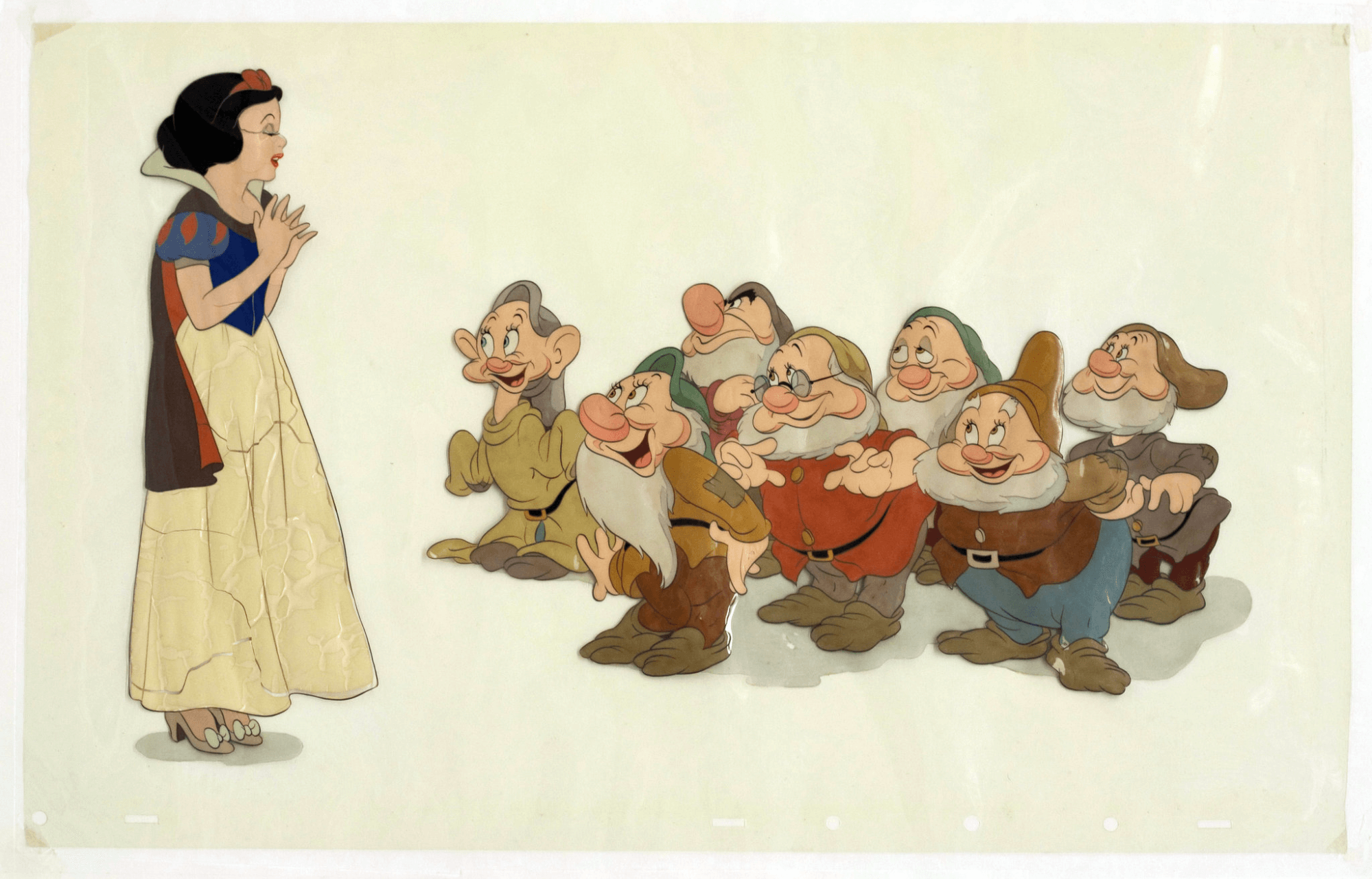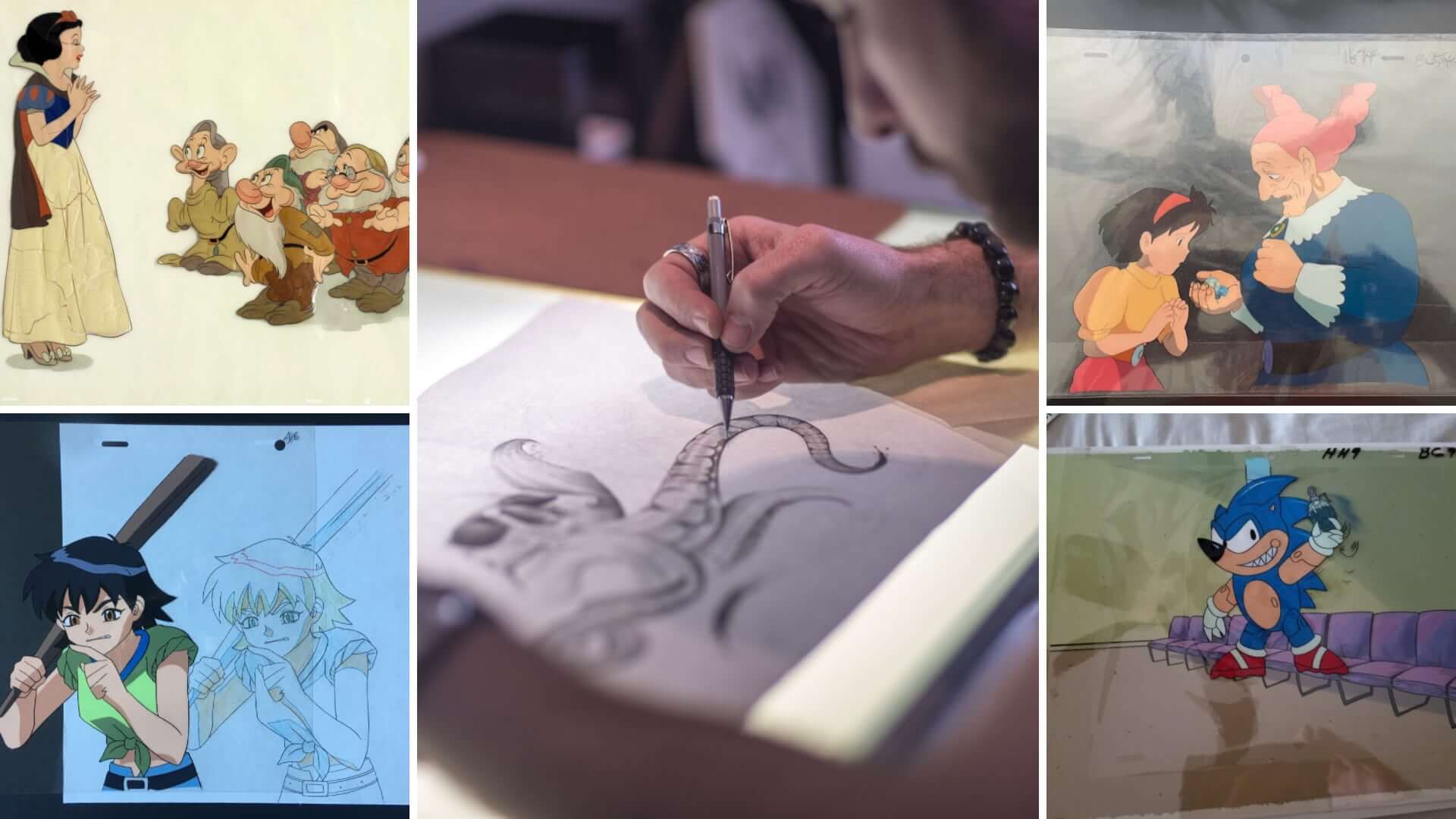What is cel animation? For that matter, what is traditional animation? And, how does it differ from other animation methods? There are many forms and types of animating moving images but this was one of the first. And it was the dominant method for decades until computers got involved. We’ll be answering all of these questions, taking a look at the history of cel animation, and examining the role it plays today as animation technology continues to progress.
What is cel animation
First, let’s define cel animation
Before we get into the definition of cel animation, having a primer on animation in general can be helpful. For further learning, check out our breakdown of stop-motion animation and how rotoscope animation works.
CEL ANIMATION DEFINITION
What is cel animation?
Cel animation is a form of traditional 2D animation. ‘Cel’ is short for ‘celluloid,’ as the images were drawn on thin, transparent sheets of plastic material. This material was sometimes but not always celluloid. In traditional cel animation, each individual frame is drawn onto a cel in black ink. The cel is then flipped over, and color is applied to the opposite side. Backgrounds are created separately. When both are complete, the transparent cel is stacked in front of the background, then photographed to achieve a finished frame of animation. The same background may be used in conjunction with multiple cels; this is why backgrounds are often more detailed than the characters in front of them. This process is repeated at the frame rate desired for the final project. Traditional animation is often presented at either 24-frames-per-second or 12-frames-per-second. This type of animation is rarely practiced in professional animation since the advent of digital animation.
Cel Animation Characteristics:
- Used in traditional 2D animation
- Time-consuming and costly
- No longer practiced extensively
When Was Cel Animation Invented
The golden age of cel animation
Cel animation was considered the standard method of 2D animation for many years but has largely gone out of fashion in the digital age. Before we look at the role this type of animation holds in modern filmmaking, let’s take a look back at its golden age.
Why was it so popular? And why is it considered obsolete these days?
When did cel animation start
Compared to modern animation methods, animating individual cels is extremely time-consuming and expensive. But, back during the golden age, this method of animation could save time, be more efficient, and produce better results. Especially when compared to the alternative of painstakingly drawing every single element of a frame, by hand, hundreds or thousands of times.

An animation cel from Snow White and the Seven Dwarfs • Disney cel animation
Disney played an important role in the advancement of cel animation techniques and technology. They spearheaded the search for alternatives to the original clear plastic material used, cellulose nitrate. There were many reasons why an alternative was sought. The material was highly flammable, would release hazardous fumes, and would severely degrade over time even in the best conditions.
Cellulose acetate took over as the primary material used in cel animation for a time but it too was imperfect and would degrade over time. Cellulose acetate was eventually replaced by clear polyester, which was much easier to preserve and to work with. These days, physical cels are more often relics than they are actual tools of the animation trade.
The last Disney film to be entirely animated with cels was Oliver and Company from 1988. A year later, The Little Mermaid was the last Disney film to utilize cel animation in any capacity but did not use the technique exclusively.
Cel vs Digital
Cel animation in the digital age
Some of the ideas and techniques pioneered for use in cel animation are still utilized today. The physical act of animating by hand is rarely performed in professional environments.
Of course, it is still possible to animate the old school way, and a number of hobbyists and enthusiasts keep the technique alive. But, in professional animation projects, the additional costs and the workload demanded by this kind of animation are rarely if ever worth the effort.
With so many great animation software programs available to professionals and amateurs alike in the digital age, the path toward becoming an animator is easier to navigate than ever before.
Cel animation examples • Snow White
Even in “traditionally” animated projects and hand-drawn animations, digital technology has revolutionized the creative process. It has streamlined many of the more invasive or preventative roadblocks formerly associated with the medium of animation.
Old school animation techniques can be implemented more efficiently through the use of modern computers, even if the artwork itself is still drawn by hand.
Using digital tools in traditional 2D animation
Though practical animation is mostly a thing of the past, the technique remains an important stepping-stone in the history of animation. And many works of art created through cel animation live on as timeless classics.
UP NEXT
What is Rotoscoping?
Now that you know what this type of animation is, you might be interested in learning about another animation method that doesn’t find a ton of use in modern filmmaking but that still has a place with the right filmmakers and the right material. Learn all about rotoscoping, up next.
Up Next: Rotoscoping Explained →
Showcase your vision with elegant shot lists and storyboards.
Create robust and customizable shot lists. Upload images to make storyboards and slideshows.
